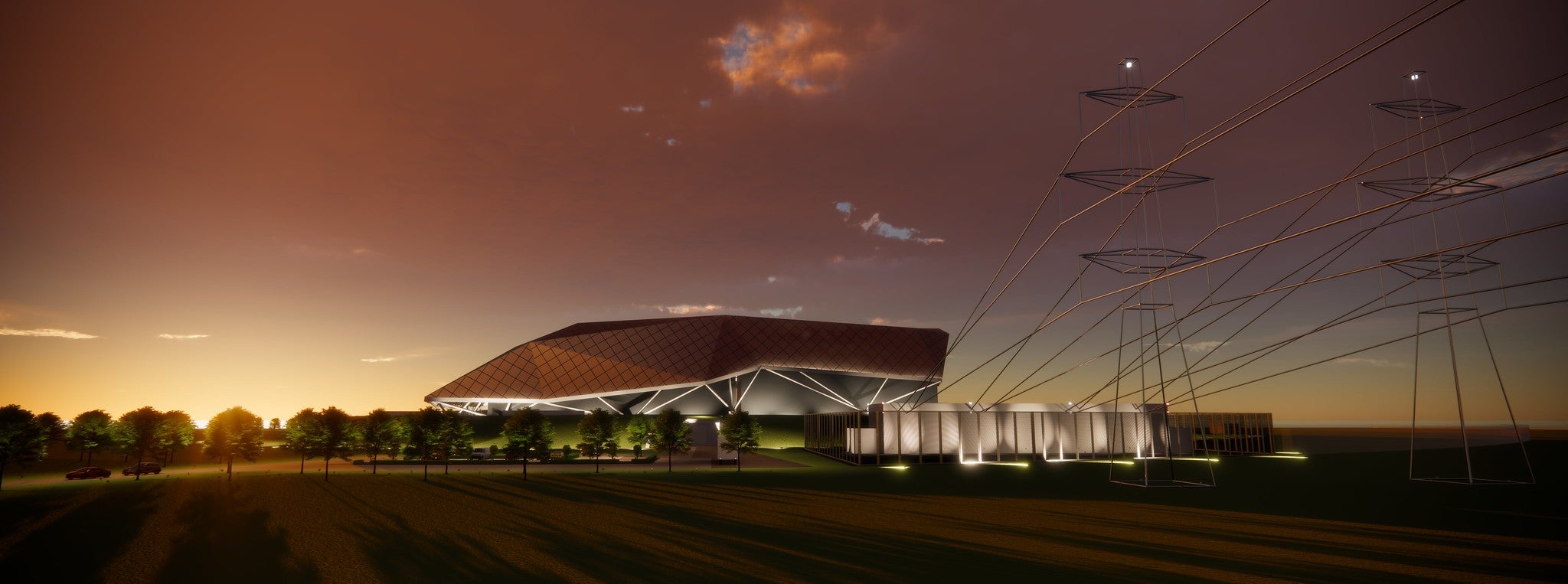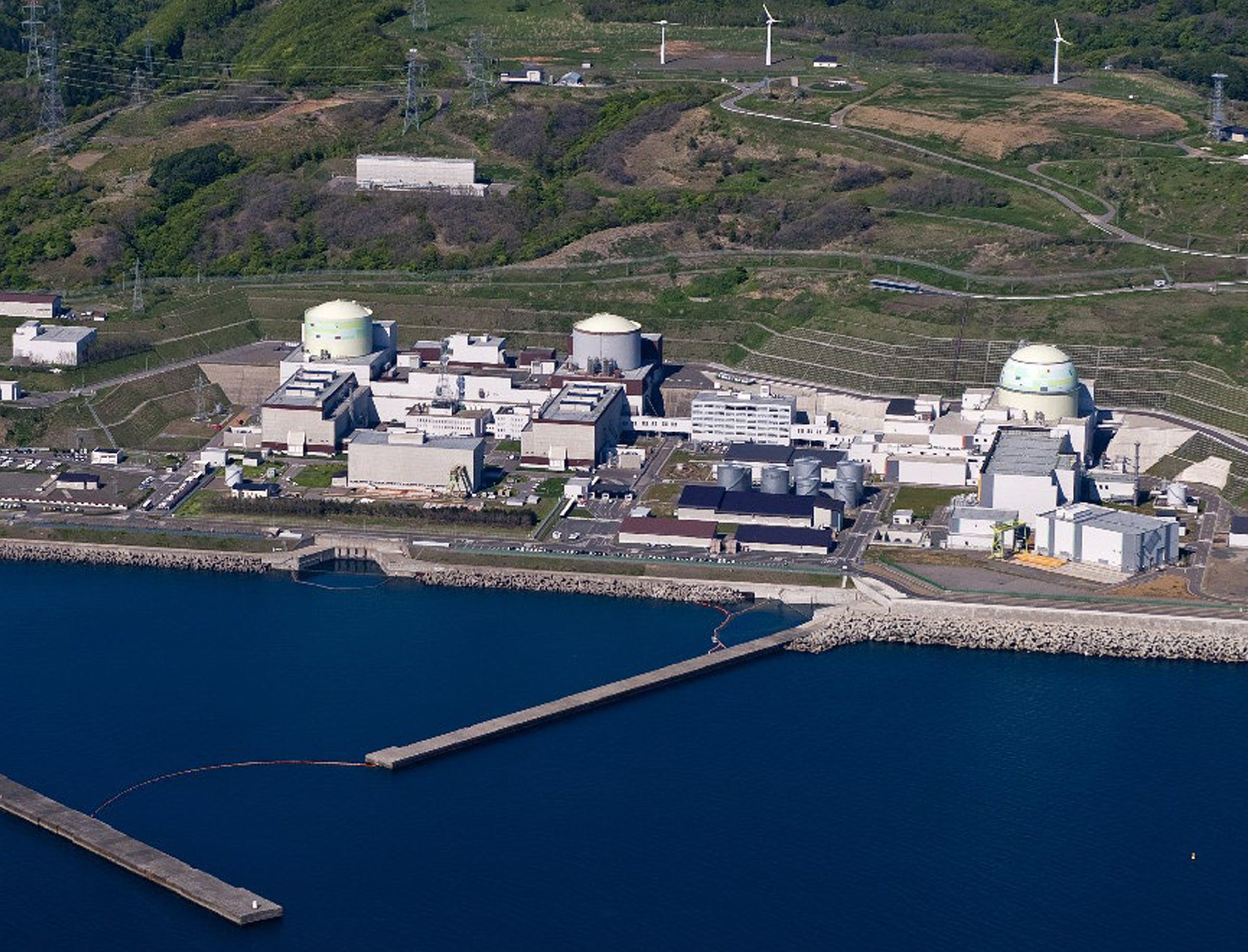Are small modular reactors the answer nuclear power needs?
The traditional pressurised water reactor is an expensive and time-consuming build, so could smaller modular reactors provide us with a cheaper, quicker solution, asks Steven Cutts


In the early days of the post-Second World War world, nuclear power was regarded as the future and all modern governments fought to get a grip on this new and exciting technology. It was said that nuclear electricity would be too cheap to meter and that pollution as we knew it would become a thing of the past. Britain, the country that had arguably invented nuclear power, was at the forefront of this crusade.
We should remember also that it was a field that at times was capable of real triumphs. By 1996, about 17 per cent of the world’s electricity was derived from nuclear power. It’s an impressive figure and shows just how far our nuclear engineers had come. Then things started to go wrong. By 2019 the nuclear contribution to global power output had fallen to 10 per cent. Older reactors were in the process of being decommissioned and very few new ones were being built.
Worse than that, the cost of nuclear power is actually going up. In contrast, the cost of renewables is falling rapidly leading to a widespread take up for the new tech.
The traditional pressurised water reactor is a predictably expensive build. It is said that a PWR would take about six years to put together, but in reality, the true build time can be much longer. These are the cathedrals of the modern age and they are built in the open air, on-site, by men who are exposed to the elements. Almost every design is unique. Bad weather can easily send the construction crews back to the porta-cabins. At first sight, this is a source of confusion. We do – after all – have access to machinery that our forefathers could barely have dreamt of and yet many of our projects continue to be beset by delay and cost overruns.
Problems of this kind have been an absolute gift to the anti-nuclear lobby. But your average atomic scientist has never been a pushover and they have no intention of giving up easily. Far from it, the nuclear industry is pushing their own product as a zero-carbon option. Environmental concerns have shifted to global warming and away from fear of radioactivity. Even the green movement has become conflicted and there is now a breakaway faction of green activists who openly advocate for nuclear power.
Some years ago, Britain built a reactor called Sizewell B. They did this by buying the blueprints from the American conglomerate, Westinghouse. Sizewell B was built on schedule and on budget and it continues to maintain an acceptable safety record. Looking back, it might have been more sensible to build a second reactor to the same design but the governments at the time became inhibited. The population of engineers who had been trained to build Sizewell B either retired or made a sideways move into other industries. Having lost this capability, we are now building a massive new reactor at Hinkley Point that is critically dependent on French and Chinese technology. In an age when our reliance on overseas governments has been brought into question, our reliance on China in particular is beginning to cause real concern.
Part of what was happening here was the traditional British affliction of living in the past. In the days when we were still arguing about coal miners, little or no effort was put into developing the next generation of energy generation. When we decided to build windmills, Britain even became reliant on Denmark (population 5 million) for key pieces of engineering. Even today, 80 per cent of the hardware costs in an offshore wind farm are spent on imported kit. Meanwhile, it should be said that most of the photovoltaic (PV) solar panels in the world are now being built in China.

In effect, we have all but abandoned our ability to build all three of the principal energy resources upon which we now depend. Not to be outdone, the nuclear power industry is now staging a comeback fight with a new concept: small modular reactors (SMRs). They plan to manufacture them in a factory where the construction process can be performed in a pleasant air-conditioned building. If needs be, they can all be built to the same design, further increasing efficiency.
The proponents of small Nuclear Reactors believe that they will permit a modular approach to the construction with each SMR being delivered to a location on the back of a truck. The SMRs would then be lined up until their collective power output is equal to a much larger and more established pressurised water reactor. It has been estimated that a cluster of SMRs could produce as much energy as one PWR for about 20 per cent less money.
According to the International Atomic Energy Authority, an SMR is a reactor that produces less than 300MW of power. Given that we can put an SMR in a submarine we shouldn’t be too surprised to hear that we could also put one on a barge or a large truck. In principle, we could sail them to another country on a barge and plug them into the local electricity grid while the barge itself is still in the harbour.
Rolls Royce’s nuclear division has produced a reactor that can fit in a submarine and proven their reliability in one of the most hostile environments known to man
SMRs will be able to use “passive” design features, improving safety without human intervention. As a consequence, staffing levels within the actual plant might also be reduced. Thus far, the only operational SMR in the world is the floating nuclear power plant Akadeik Lomonosov in the eastern part of Russia. The design is a modification of a reactor that has previously been used in Russian nuclear-powered ice breakers.
In fact, most of the designs for SMRs draw on the history of nuclear-powered vessels. Some concepts show them being built in underground trenches. SMRs would not require the sort of routine refuelling procedures that plague conventional reactors. It would produce power for around 60 years. With fewer moving parts they ought to be able to achieve a higher safety record than a PWR at a lower cost. But there are other advantages too, with at least one of them much darker.
As a young science graduate, I was offered a PhD project looking at the impact of a wide-bodied jet on a nuclear reactor. More than a decade before the events of 11 September 2001 were even thought about, the industry had already thought about sabotage as a catastrophic modality of failure. It has been suggested that if the next generation of small modular reactors can be installed underground then they might less vulnerable to a suicidal airline pilot.
Another issue for governments is the speed of construction. Right now, politicians are desperate to change our energy strategy and reduce our reliance on natural gas. It takes at least six years to build a PWR, but as little as 24 months to build a gas-powered fire station. It’s easy to see why gas was attractive while it was still cheap. In fact, gas made a lot of sense to everybody right up to the point when President Putin decided to invade Ukraine. Most authorities agree that the SMR design for nuclear power could be delivered faster than a traditional reactor.

Within the British engineering community, there is room for optimism. Rolls Royce’s nuclear division has long produced a reactor that can fit in a submarine and proven their reliability in one of the most hostile environments known to man. If we can put a reactor in a boat, surely we can get a new-design SMR to work on dry land? Indeed, Rolls Royce has expressed hope that in the long run, they could actually export their own design, creating an income stream that eventually exceeds the earnings from the aero engine division.
Needless to say, Rolls Royce isn’t the only company with this objective. Many other groups are already active and on the global stage, it may not be easy to steal a head march on our American rivals. Among the aforementioned rivals, the “Ultra Safe Nuclear Corporation” of North America is surely deserving of the first prize for whimsical self-promotion. Ultra Safe is proposing a new wave of very small reactors of their own including some that would fit into a spaceship that is destined for Mars. It sounds far-fetched, but Ultra Safe are deadly serious and they have an awful lot of very clever people in their research labs. Their micro nuclear power plants would be smaller than a telephone box but able to power a small town.
If this is a renaissance for nuclear power, how far can we take it? Well, there have been studies that have cast doubt on the ability of the world to ever mine enough uranium to provide nuclear fission for everyone. The nuclear fission industry will likely remain an augment to our power-generating capacity rather than the main driver.

The real headache for the atomic scientists of this world is that the cost of renewables continues to fall. An incredible 60.4 Gigawatts of wind energy was installed globally in 2019, a 19 per cent increase on the installations of 2018. The figures for solar power are also impressive. For all their inherent problems, renewables continue to dominate the market. They require no fuel, there is no apparent pollution of any kind and they provide a government and a nation with an energy source that is difficult for foreign powers to steal, undermine or blockade.
For many years the costs per kilowatt hour of solar and wind were prohibitive and the ideological supports of these technologies were all in favour of government subsidies. They would lie awake at night, hoping to heck that the global oil and gas market might blow a fuse and that their own preferred energy sources would become competitive by default. Many of us today would see the Russian army as the most effective lobby group on Earth for the defence of renewable energy.
But things have changed. Over the last 10 to 20 years, the wind and solar power industries have advanced by incremental steps. They have become a legitimate and mainstream source of energy. That isn’t to say that a renewed nuclear power capacity cannot function as a baseline energy source that dampens the inevitable variations in the supply of renewables. Remember that electricity is pretty ephemeral stuff and when the supply surges, it won’t be easy to store.
Not all commentators are convinced by these arguments. The nuclear Japanese disaster was provoked by an act of nature – namely an earthquake beneath the Pacific and the resultant Tsunami, but there will always be other modalities of failure that have not yet been envisaged. This and the ongoing uncertainties of how we could dispose of nuclear waste continue to blight the prospects for atomic energy.
In the 20th century, the French emerged as one of the few countries that seemed to be able to make nuclear power work. They actually took it as far as 75 per cent of their electricity output. It was a formidable achievement that gave them considerable independence from the price of oil and gas. If – in the 21st century – we chose to introduce electric vehicles on a massive scale, then overall demand for electricity will soar. Nuclear fission reactors can serve as a buffer amidst a diverse energy mix that will be dominated by renewables but where there is the continuous danger that energy output from solar and wind power will suddenly plummet – and yet the nation will expect their electrical appliances to keep working.
Subscribe to Independent Premium to bookmark this article
Want to bookmark your favourite articles and stories to read or reference later? Start your Independent Premium subscription today.




Join our commenting forum
Join thought-provoking conversations, follow other Independent readers and see their replies
Comments